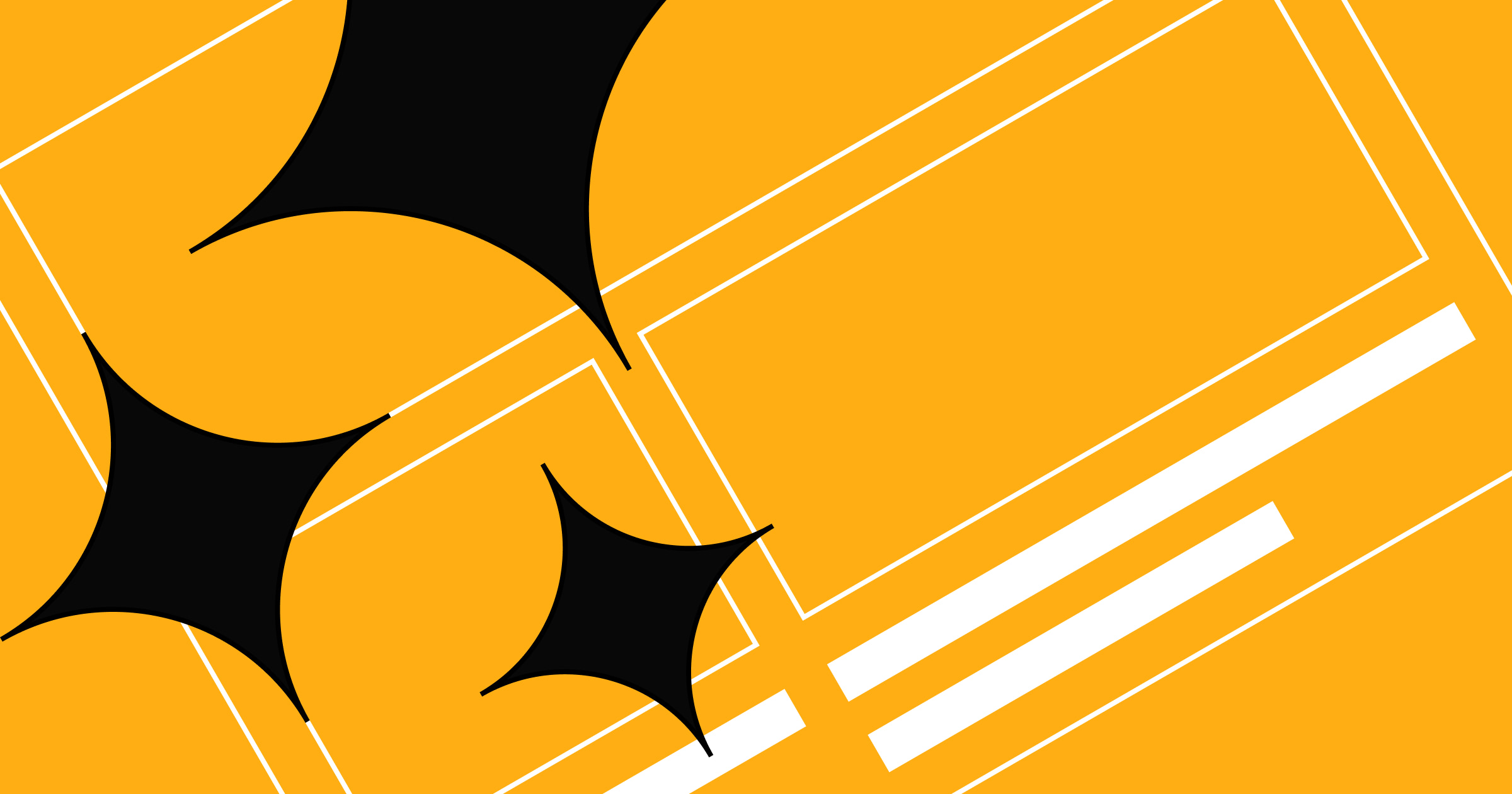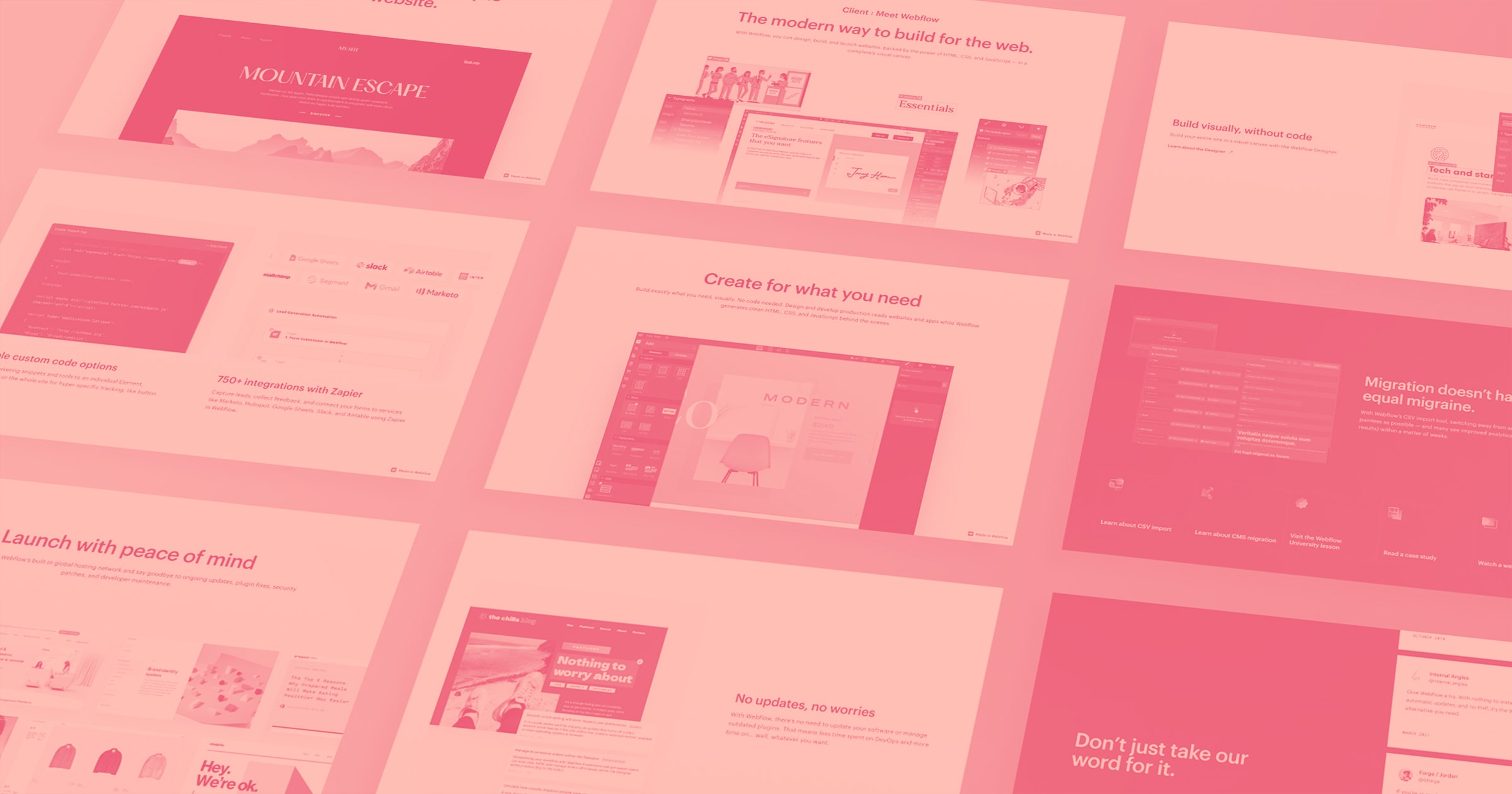Navigating client pitches can be intimidating, particularly when it comes to presenting your portfolio. However, with the right preparation, it’s a powerful platform to showcase your value and expertise as a designer.
Client meetings — whether they’re with large corporations or small businesses — often require web design portfolio presentations. While you might already have an online portfolio or personal website that showcases completed work, these demonstrations require walking prospective clients through your design process to express how the parts fit together.
Succeeding in these interviews requires strategic selection, curation, and exhibition of your work. If you’re giving a UX design portfolio presentation, you can use these same strategies, considering that some of your solutions may be on a smaller scale.
What is a portfolio presentation?
In a portfolio presentation, you present a small selection of design projects and explain your design decisions when creating them.
While you might end up presenting to just one person or doing a mini-presentation as part of a series of questions, most portfolio showcases are dedicated panel sessions. These last anywhere from 30 to 60 minutes, and while you might be presenting to a single decision-maker, you’ll often find yourself in front of a team that may include a project manager and other designers at the company.
From the client’s perspective, the purpose of a portfolio presentation isn’t just to evaluate the quality of your design work. They’re also scrutinizing:
- Your design process: Your overall approach to solving design problems, how you generate ideas, what you do when an idea doesn’t work, and how good you are at listening to and incorporating feedback
- Your communication skills: If you can clearly express your design intentions and findings to the committee, you’ll also be able to communicate well with people on your team and across the organization
- Your professional integrity: How you demonstrate respect for collaborators, acknowledge team contributions, and showcase reliability
How to organize a digital portfolio
As with any job application, you must align your portfolio to resonate with your audience. You can also use your existing web design portfolio to provide a deeper exposition of your chosen projects.
How many projects should you include?
The number of case studies you present depends on the length of your presentation. Plan on one or two projects for a 30-minute session and two or three for a 60-minute one. Including a spare project is prudent if you get through the material more quickly than expected.
Which projects should you choose?
Think about your past projects and decide which fit best in your showcase. Consider factors such as:
- The job requirements and technical skills mentioned in the position description
- The client’s industry and specific needs
- Projects that resonate with the client’s graphic design style or ethos
- Success stories where your design significantly impacted a client’s business
- Designs you’re proud of and enjoyed working on
- Recency (you want to illustrate you’re continually improving, so avoid older projects unless there’s a solid reason to include them)
How should you order the projects?
Once you know which projects to include, think about how to arrange them for the best logical flow. Consider beginning with a smaller self-contained project that introduces your design process and style. Then, after you’ve gained momentum, you can dive into more complex projects.
What’s the best format for a web design portfolio presentation?
Some designers flesh out their existing online portfolio and use that in the presentation. However, most create a dedicated slide deck for better manageability and logical flow.
If you’re seeking a straightforward approach to crafting slides, Google Slides and PowerPoint offer intuitive interfaces for quick and effective deck creation. You could also try Canva’s presentation tool for easy data visualizations or Haiku Deck for responsive presentations. Keep a PDF copy of the slides on a USB drive to allow for in-person displays.
You’re applying for a design position, so you should pay attention to how your portfolio looks and use consistent visual language throughout. But you can also customize the presentation of the deck for your audience.
If you’re pitching to a budding startup, highlight your willingness to experiment with bold color schemes or playful typography and showcase collaborative projects where your ideas contributed to an innovative outcome. For larger or corporate clients, display a professional look by prioritizing projects that balance aesthetics with usability or designs that improve business metrics, such as conversion or click-through rates. Avoid imitating the company’s aesthetic too closely, as this can come across as amateurish.



















Get started for free
Create custom, scalable websites — without writing code. Start building in Webflow.
How to present a portfolio
When you start your portfolio exposition, avoid launching into the first project immediately. Instead, open by giving your audience a broad sense of who you are and how you approach design. Take one to three minutes to briefly touch on the following:
- How long you’ve been designing
- Where you’re currently working
- Your overall approach to design (for example, maybe you incorporate principles of user-centered design or human-centered design)
- Unique qualities your designs have (perhaps you’re an expert in typographic design, color psychology, or UX design)
- Which projects you’ve chosen to present and why
Presenting the individual projects: 10 steps
Here’s a general framework you can adapt to suit each project. Depending on the length of your demonstration and specific features of the designs, it may make sense to combine or skip some steps.
1. Set the scene
Give a broad overview of the project, including:
- Who the design was for
- Who you were working with
- Your role
- Project duration
- Any other constraints and stakeholders
2. Describe the problem
Clearly describe the problem you solved. Include the purpose of the design (for example, redesigning a website to increase online sales) and the intended downstream effects for the client or company (for example, increased revenue and company growth). Include “before” pictures if the project was a redesign.
3. Show how you broke down the problem
Explain your initial investigation of the problem, including:
- User research you conducted
- Metrics you examined
- Root causes you found
- Additional information you sought from the client
4. State your objectives
Specify any goals you set for the design solution. If you include quantitative metrics (for example, if the client wanted to increase online sales through an ecommerce site or reduce their website’s bounce rate), state the target you set for the improved version.
5. Present some of the initial design ideas
Give the panel a window into the ideation phase by revealing how you came up with and explored possible solutions. Include sketches, prototypes, or wireframes you developed as part of this process.
6. Present the solution you settled on and explain why you chose it
Include attractive pictures of the solution you decided on. Point out key elements and explain why you designed them this way.
7. Describe the implementation and validation phase
Illustrate how you iterated and tested the design based on different types of feedback, including website performance metrics, user feedback, and client feedback.
8. Explain how your solution solved the initial problem
Linking your solution back to the original problem demonstrates to the panel that you’re good at staying on track during the design process and communicating your ideas. Bring the audience full circle by referring to the problem you described in Step 2, the detailed analysis you conducted in Step 3, and the goals you set in Step 4.
9. Reflect on the solution
Explain what you think about the solution. If you have up-to-date information about the project’s current status, share it. Report on final client feedback and any developments that have occurred since you delivered the final design.
10. Ask for questions
Ask the panel if they have questions for you. Expect some of the following:
- What did you learn from the project?
- What was the most significant design challenge in this project, and why?
- Would you take a different approach to any of your projects?
Practicing the presentation
Align your rehearsal with the actual presentation settings as closely as possible. For an in-person presentation, try to practice in the same environment with the same equipment, such as a tablet or laptop, that you’ll use during the actual interview. Enlist the help of a knowledgeable friend or trusted colleague to act as your audience if possible. You can also approach recruiters to give you some pointers.
If the interview is online, check which video conferencing software the company will use and practice with the same — you don’t want to be off your game when you can’t find the screen-share button.
Show off your designs everywhere you can
If any clients or interviewers research your designs beforehand, you want to ensure they like what they see. To make a great first impression, consider taking Webflow’s 21-day design portfolio course to create a beautiful new portfolio or upgrade your current one. You could also browse some of the design portfolios created in Webflow for ideas.
Selecting your best work and laying bare your creative process for prospective clients can be a surprisingly rewarding experience. We wish you all the best in your job search, and we can’t wait to see what you design in your new role.































